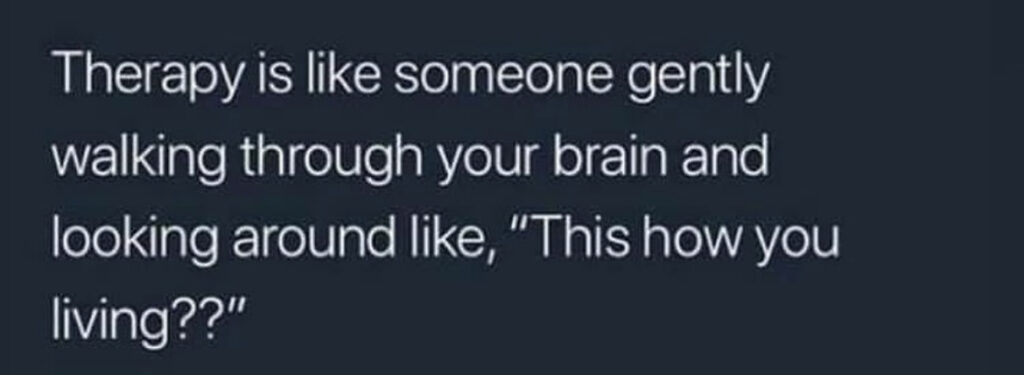Presenting this thesis feels like an impossible task, so I am here to do the impossible, and I hope it resonates with someone *buh dun tss*
Ultimately what I’ve decided to do with this presentation, rather than attempting to comprehensively present my findings and clinical applications, is to present my thesis rationale and intentions from a sort of zoomed out, celestial perspective. The details are just really hard to talk about in 15 minutes, and if you’re interested in any of them you could just read my thesis. So I want to make this presentation go a step further by offering more of a narrative around how I came to this in the first place, and what I walked away from it with.
Perhaps I want to justify all the time and energy I poured into the thesis instead of bore everybody by listing my findings. I think more than that, actually, I want people to know why I think the findings are valuable. What I assume will happen often is that as people go to read my thesis they will get overwhelmed by the individual components and not see the overall picture.
This is totally my own fault, because I use fancy terminology about dynamical systems and neuropsychology and dissonance, because I didn’t write it from a first-person perspective at all due to being stubborn and not wanting to make it about me, and essentially because in an effort to make it scientifically rigorous I think I might have left out my soul, at least in chapters 1 and 2. So this presentation is really more for my soul than for you all. It’s my soul’s say on the topic.
At the end of the day I wrote 50 pages on vibes, and here’s why…
Sometimes when I’m angry I go into my room and exasperatedly scream into the abyss. Whenever I do this, my guitar in the corner picks up on this sudden shift in the frequency and starts to ring as one or more of its strings vibrate. The guitar isn’t echoing back the tone I’ve used to scream. The strings are emitting their own natural vibration in the context of my shriek. That, my friends, is resonance.
Resonance is the product of an interaction–without my scream, the guitar strings go back to being uninvolved in the situation. They really only spoke up for the moment of exasperation. I made some waves, so the strings made some waves too. It was a brief moment of something notable constellated between us.
What I find cool and interesting is how ready they were to resound when the environment offered a proper context for it. They didn’t try to vibrate when I screamed, they just did it because it’s what they do when someone screams in a room.
Humans are like guitars in this way. We readily and noticeably resonate in certain contexts and we don’t in others. Whether looking at people from a biological or psychological vantage point, we’re resonating. Our brain cells do it all of the time. Different brain systems within one person resonate with each other, in fact, the same way different people vibe well or don’t when placed in an environment together. Whether discussing life from a physical and phenomenal basis, then, resonance is part of the conversation.
(It turns out dissonance is, too, and I present my findings around the idea that resonance and dissonance are functionally related and interdependent.)
Resonance is quite a difficult thing to discuss without zooming out, because it applies to so many worlds, and so many conversations are being had and have been had about it. The worlds of math, music, brain science, psychotherapy, philosophy and sociology all have some kind of narrative about it. In some ways my thesis tries to paint a picture of a universe where hugely different disciplines like these can actually relate to each other because they possess a shared language. But since I can’t tackle all of these domain at once, I’m going to focus the cosmic party being had in the Psychology galaxy.
*Party meme*
Psychology is weird party to be invited to because there are brain scientists and there are Jungian Analysts at the party, and they’re all trying to help people in their day jobs, but they do it in entirely different ways. So if we imagine this party irl, the brain scientists would be on one side and the therapists would be on the other side, and they are definitely not mingling much past social niceties. When they do interact, it’s kind of awkward and hard to watch, and they really don’t get each other much at all. It’s like the band geeks and the jocks in high school.
If we looked even closer, though, we’d see more than just the physical/phenomenal divide between psychology people. We’d see that the cognitive theorists and the neuroscientists all have their own cliques arranged along the fault lines of consciousness theory, brain imaging, measurements, etc. There is an entire spectrum of difference and variety even just in terms of people who do psychotherapy, and they don’t really talk much to the academics or the researchers, and yet they’re all studying the same thing at the end of the day. It’s actually kind of sad how cliquey this party is. I feel like they all have more in common than they think they do. They’re quite a fragmented bunch.
I can’t solve all the social problems at this party, but I was hoping to at least engage you all in a thought experiment about one potential way to improve the social dynamics.
I want to propose that resonance is a valuable language and a unifying thread which can benefit brain scientists and psychotherapists alike on a conceptual and tangible scale, and which might also benefit individual humans on a personally meaningful scale if it could be engaged with therapeutically. The experimenters, the thinkers and the feelers populating the psychic space at all levels of abstraction can get on board with this shift in the dynamic.
When specific things shift, all other things around the shifting things rearrange too. Small shifts can reverberate into the ether in great waves sometimes. If I could somehow come to know that even if one therapist read this and utilized it with their client in a helpful way, I think I’d be satisfied. If the whole integrative psychotherapy community got on board, all the better. So maybe this could help the world in a tiny way even if this party is a lost cause, which could be the case too. But before we give up on it and leave, here’s one way to think about it.
Qualities of resonance arise in the real world (physical) and in subjective (phenomenal) experience. Imagining both subjective and objective data on the same plane is to create something like an abstract field where both matter and mind can be represented. The human experience is something like a landscape, in this way.

What’s cool about this human landscape is that we can actually map neural activity on it as well as the felt sense of personhood. So this is a place where both phenomenal and physical stuff can coexist and inform each other. It’s an imaginary space which we can represent symbolically, but so is the entire field of mathematics, and that still helps society advance. Everything is abstracted by talking about it in some way or another. I just think using useful and widely applicable abstractions is more globally useful than utilizing excessively niche abstractions, though those undoubtedly have their place.
I went into this thesis thinking that looking at the resonant landscape could be a particularly useful abstraction for psychotherapists, who all approach human subjectivity with a different set of conceptual terms. If four psychotherapists of different theoretical orientations meet with the same client, they will develop four different case conceptualizations. This makes it really hard to have a conversation about ways therapy looks going forward, then, because we’re speaking four different languages from the get-go.
A lot of people recognize this issue. There are many people in the field of psychology advocating for this party dynamic to be more integrated by helping these different theorists communicate better. What my thesis attempted to do was to present the resonance perspective to this group of people who were already interested in having a conversation about how to improve the party vibe. I kind of gave it as a humble offering of an idea I had. And I tried to paint as honest a work of art as I could on the topic.
Mainly we learned that the call comes in curious ways and differently from person to person. There is no overall pattern, but only the particular pattern in each case. (Hillman, Soul’s Code, p. 19)
